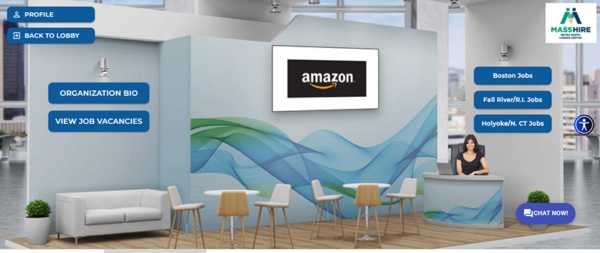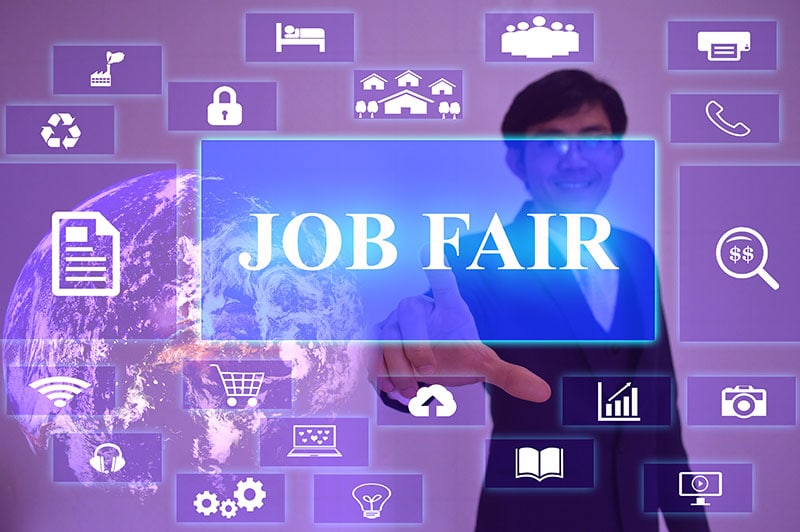As recruiting during a pandemic continues into 2021, companies are compelled to expand their virtual toolbox to connect with job seekers. According to the Society for Human Resource Management (SHRM), many employers are turning to virtual career fairs and hiring events, once considered options only for large human resources operations.
If you’re already engaging virtual interviewing as part of your recruiting efforts that’s great! However, while virtual interview tools, like Zoom or GoToMeeting, can be a great fit for individual or group interviews that are scheduled in advance, they don’t tend to work as well for hosting virtual events where the number of participants may be high and unknown.
Today’s unprecedented growth in frequency and participation in virtual job fairs compared with prior to the pandemic has spurred the growth of virtual job fair event hosts ranging from organizations and employment agencies to trade associations and universities. The scope and “WOW” factors can vary greatly depending on the virtual job fair platforms they offer.
Here’s what you need to consider before participating in a virtual job fair to make sure you’re maximizing your virtual job fair experience.
Creating a Branded Digital Environment
Virtual event platforms offer a range of powerful customizable exhibitor booth features. These can include downloadable brochures, galleries, and streamable videos. Creating a strong branded digital presence at the virtual job fair will attract more attendees and provide job seekers with insight into your company’s culture in place of being able to conduct in-person tours and meet and greets.
Flexibility in Running Time
Hosts can offer tremendous flexibility in the virtual job fair event running time and can be set up to be live if the host prefers. This can be especially helpful if you are recruiting candidates from different time zones. Some virtual job fair hosts provide an “evergreen” online job fair so that the event remains available for an extended period of time (days, weeks or even months). “Live” aspects – like chats and webinars – are confined to a specific window of time, while the rest of the content, job boards, etc. are available for a longer timeframe.
 Connecting with Candidates
Connecting with Candidates
Usually job seekers need to build their profile and upload their resume upon registering for a virtual job fair. A virtual lobby displays all the participating employers where candidates can “click to connect” and visit a company’s booth. An effective virtual event will provide real-time audio, video, and text-based chat options for candidates to interact with employer recruiters.
Post Event Results
Functionalities such as resume search tools, identifying recurring and unique visitors, quantifying webinar views and chats, securing on-line applications and more, provide measurable insights to help you determine if your virtual job fair efforts were effective. These post-event results provided by the host will guide your future virtual job fair content to create an even more powerful presence and improve your recruitment funnel.
The cost-effectiveness of a virtual job fair, compared to a physical recruitment event, can vary depending on participation fees and any need to upgrade your marketing and digital materials. However, the overwhelming consensus is that virtual job fairs deliver multiple benefits at a fraction of the cost of participating in a physical event.
Interested? Begin by checking with your local One-Stop Career Center. Many host virtual job fairs and recruitments at no cost. The career center staff will also help you navigate their virtual job fair platform and provide technical support before, during and after the event.




